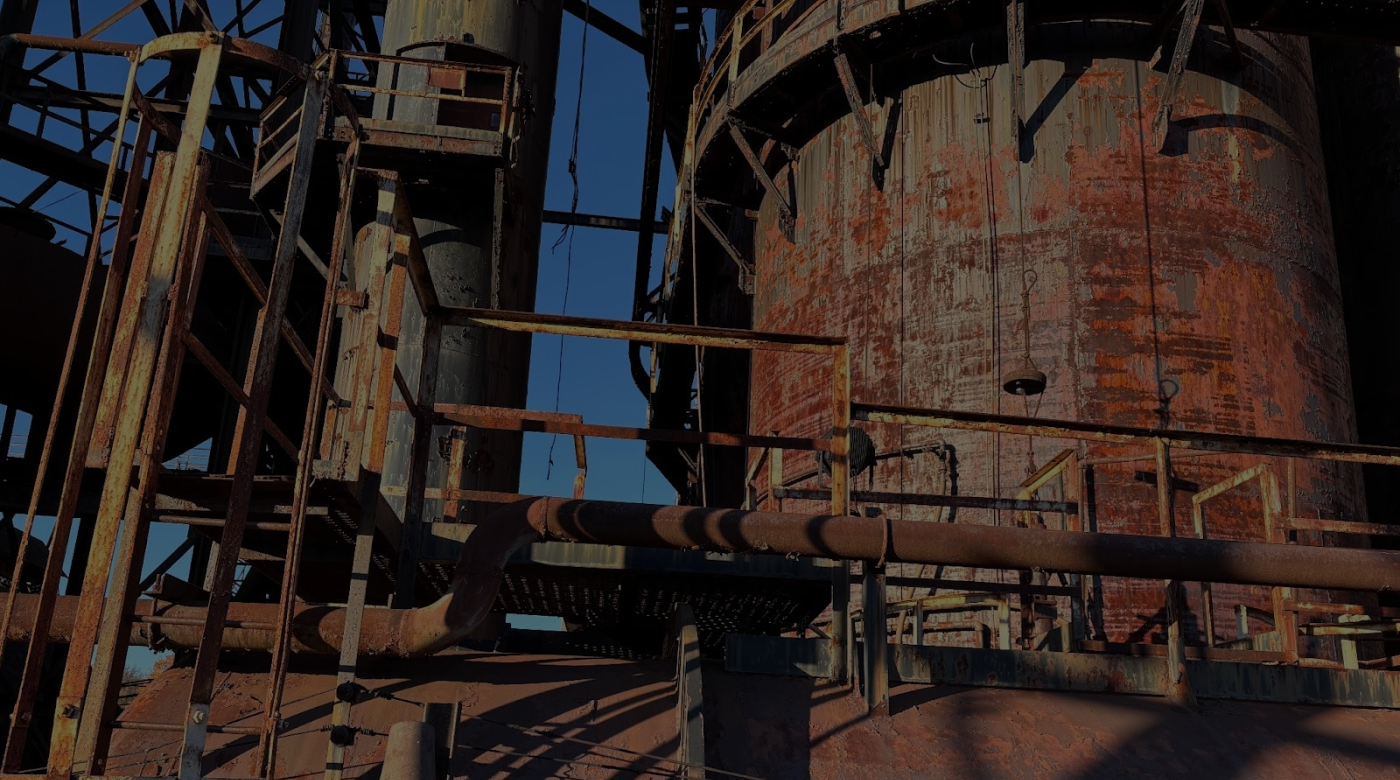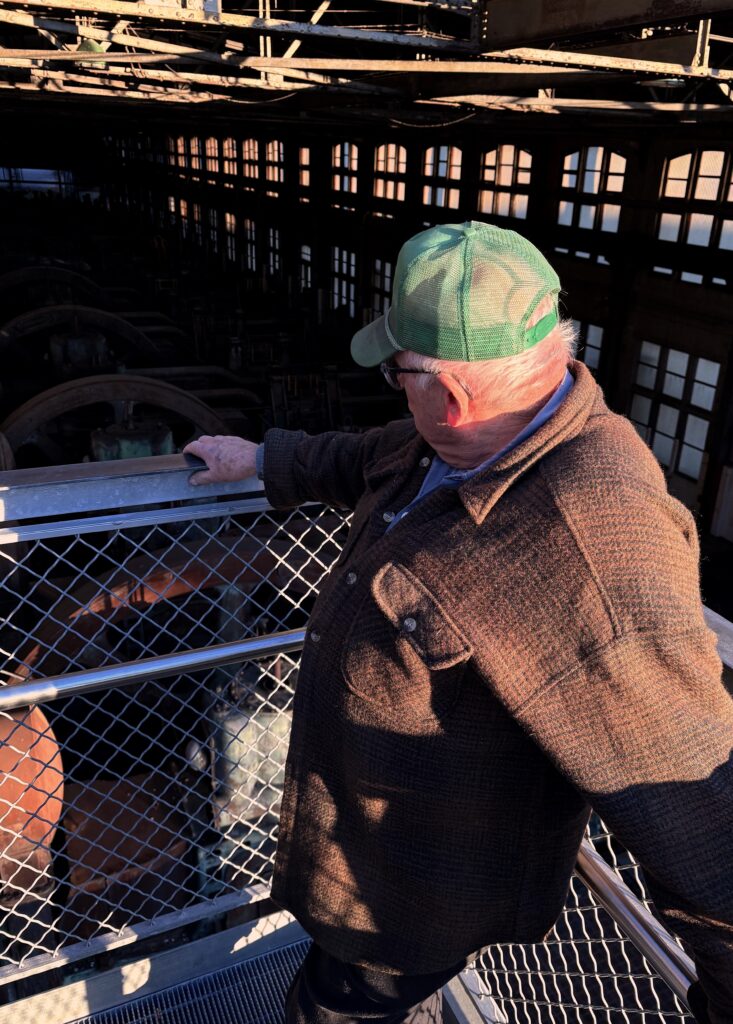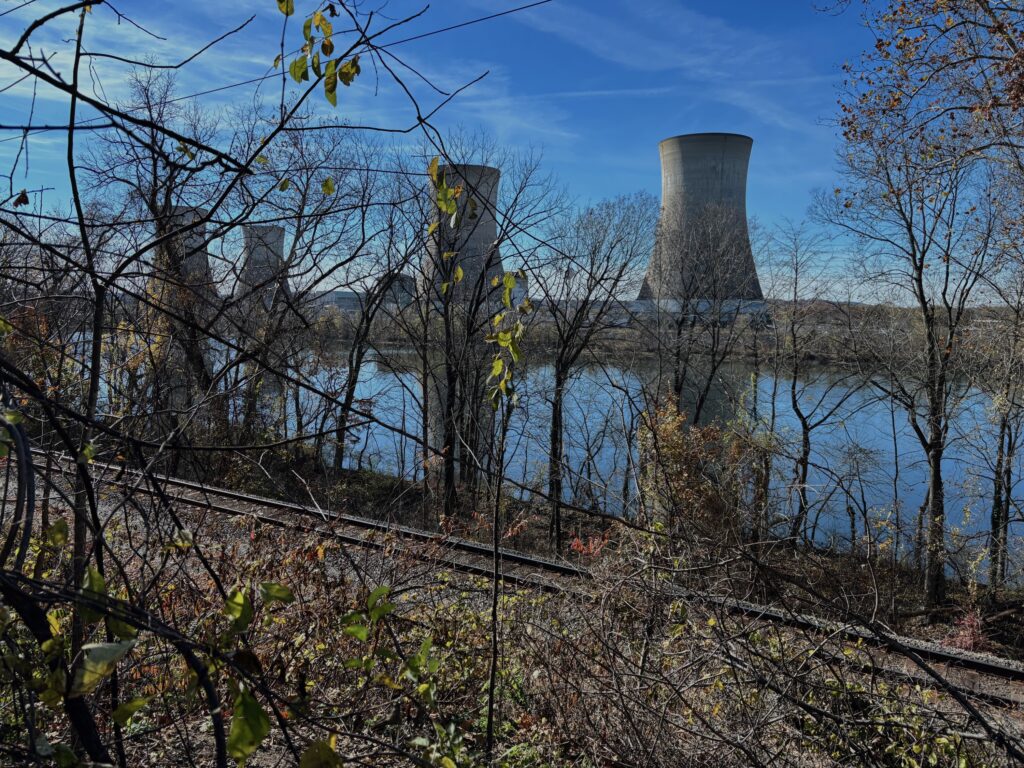Members of the Trustworthy Infrastructures team write about their research road trip through Pennsylvania, where they traced the connection from the industrial past to our tech-dominated present.
Digital Infrastructures, Material Consequences
A Road Trip Through Pennsylvania’s Industrial Histories and Technological Futures

February 5, 2025
Don Young’s hands reveal his 56 years of work as a foreman at the Bethlehem Steel headquarters, in Bethlehem along the Lehigh River in eastern Pennsylvania. At 87, Don remembers the mill when it was at the peak of its production. Once one of the world’s largest steel-producing and shipbuilding sites, Bethlehem Steel employed 30,000 people in Bethlehem and 300,000 across the United States.
“I miss it everyday,” he says as he overlooks the once relentless furnaces.

Don Young at Bethlehem Steel, Bethlehem, PA. Photo by Livia Garofalo.
Pennsylvania is one of many terrains of the renewed US industrial policy, which relies on large tech corporations and their proposed investments in an AI-dominated future to drive economic vitality across the country. A drive on Pennsylvania’s interstates will take you past not just the steel stacks of what was Bethlehem Steel. You’ll pass Three Mile Island — the site of America’s largest nuclear disaster, now back online to grant energy to Microsoft’s AI portfolio — a data center housed 200-feet underground in Western Pennsylvania’s limestone cave, an 11-acre site for future Amazon data centers, and many other new investments in semi-conductor plants, land speculation, and ecological demise. Alongside them, a new vision is emerging for how people and the tech industry relate.
It’s a vision that stands in stark contrast with Don’s experience of his union job, and the pride he still has in it after decades. On a crisp November day exactly a week after the 2024 US presidential election, Don and historian Mike Piersa show us around the dormant steel stacks of Bethlehem Steel. Adjacent to the steel mills, the National Museum of Industrial History takes visitors through the history of steam, iron, coal, and steel in the region, and reveals the deep ties between Bethlehem and America’s past and present. Much of the steel produced in Bethlehem was used to make warships and naval artillery key to American warfare in the 20th century. It was also pivotal to America’s key infrastructure: buildings, bridges, railroads, and dams that still stand today.
The rust of the blast furnaces reddens at sundown. Walking together, we listen to Don and Mike explain how coke was used to fire up furnaces, how iron was turned to steel, and how steel was transformed into beams that built New York City skyscrapers and the Golden Gate Bridge. They tell us about the many workers who contributed to this forging miracle. At the peak of its production in the 1950s and 60s, around 40 percent of the town’s population worked at Bethlehem Steel. But in 1995, the furnaces in Bethlehem went cold after its last cast. In 2001, the company filed for bankruptcy and its assets were sold, ending the era of steel production in the region — and with it, the jobs of thousands of workers nationally.

A view inside the former steel plant. Photo by Livia Garofalo.
Today, Bethlehem has become a national logistics hub, with millions of square feet of warehouses dotting the surrounding valley. Amazon and other corporations have taken advantage of its location within 100 miles of both New York City and Philadelphia and its connection to freight routes, international airports, and ports. This shift has massively changed the landscape of Bethlehem. Amazon trucks populate the roads, delivering goods incessantly, many of them produced abroad. Many of the town’s residents work in warehousing, but they don’t have the same purchasing or labor power steelworkers once did.
As Don explains the complex mechanism of the blast furnaces, a group of young men pass by on the stacks, now made into a walkable path. We overhear them talking about the money they’ve recently made from bitcoin mining, and it’s a fitting illustration: The contrast between the extractive economy of coal and steel and the invisible, yet equally energy intensive, extractivism of cryptocoin mining feels like a shorthand for the transitions we observed along our research road trip through Pennsylvania. This is but one of the places where twentieth-century industrial imaginaries and mythologies meet, shaping how new tech industries evolve and function, and how they impact the people and communities who bear the brunt of the transition.
Reflecting on this change, Don contrasts the invisibility of the new industry with the overt industrialism of steel. “It feels like the steel mill was part of the community. But a warehouse is like a mystery,” he tells us. “The warehouse owners don’t want you to know who they are, they have LLCs, you can’t call them up and say, hey, can we visit the warehouse. They’re here because we’re X miles away from Philadelphia, X miles away from New York. But with Bethlehem Steel, the thing that made a difference was that you had corporate headquarters here, so we had the executives living in Bethlehem and they wanted to make sure it was nice, in the place that they wanted to stay and attract talent to.”
The shadow of Bethlehem Steel is complex and in some ways, paradoxical: the era of the robber baron and the local philanthropy that followed, the union busting that existed alongside multi-ethnic crews absorbing Black immigrants from the south and European immigrants by sea, the advent of American industry and the asbestos snowballs and lung disease that claimed the lives of many of Don’s union friends. It’s one of infinite stories that met us on our five-day drive between New York City and Pittsburgh, as we traced the connection from the country’s industrial past to our tech-dominated present — and our unclear future.

Three Mile Island, Middletown, PA. Photo by Livia Garofalo.
This is a critical time for Bethlehem and many cities, towns, and regions like it, all of them grappling with competing visions of the past and a future where AI is increasingly affecting lives and work. Data & Society’s Trustworthy Infrastructures program is investigating questions of story, place, and transformation as communities like Bethlehem, Pittsburgh, and Middletown contend with that future. As we consider the technology-driven infrastructural transformations that workers, companies, and communities are weighing, we ask: How do post-industrial communities adapt to industrial transformations driven by the tech industry? What role does storytelling and speculation play in this transformation? What are the material consequences of expanding technological industries for the people who live in these places?
Are you also interested in these questions, or building similar research, campaigns, or organizing? If you want to chat more, please get in touch at [email protected] or tell us more about what you’re working on via our contact form.

